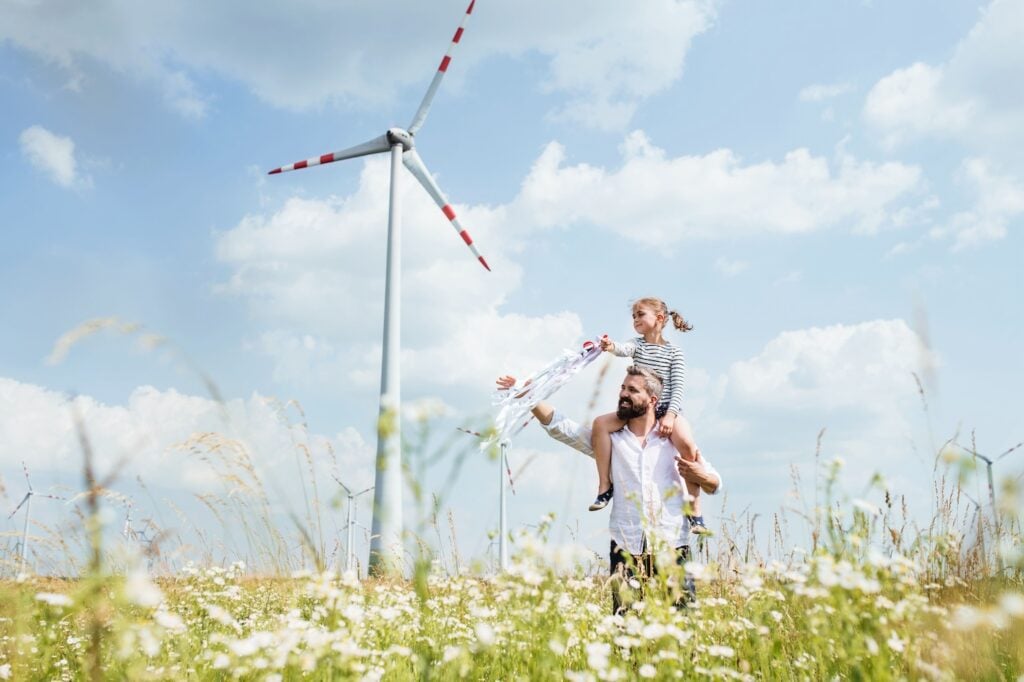8 Awesome Facts About Renewable Energy
Green energy is a simple concept. It involves using renewable energy sources like wind, solar, water, or geothermal to generate electricity instead of nonrenewable sources. Some of the most beneficial facts about renewable energy are that it produces fewer pollutants, often runs cheaper, and can also create jobs.

We’re living in a wonderful time where young people are fueling social change and helping to keep the environment safe. This generation can grow up expecting clean energy to be part of the equation, as long as we teach them early.
Facts About Renewable Energy
This article is designed to help children understand the benefits and facts of renewable energy. You can explain to your child or student that adopting more green energy sources helps diversify our options. With multiple power sources, we won’t have to be as dependent on one form of energy.
If kids encounter people who want to keep the status quo of fossil fuels, explain that it doesn’t have to be all or nothing. In fact, it would take decades to completely convert everything. And as of right now, we have to use fossil fuels to build the components of charging stations and solar panels.
A greener future can mean relying less on oil and gas and more on wind and solar.
Here are some facts about renewable energy you can share with the young people in your life to help shape the “new normal” of our society.
Solar and Wind Are the Fastest Growing Renewable Sources
In 2021, wind and solar were the fastest growing sources of clean energy, with their combined contribution doubling since the signing of the Paris Agreement in 2015. Solar energy surged by 23% compared to 2020 figures, while wind power saw a 14% increase.
This marked the first time that solar panels and wind turbines collectively fulfilled over 10% of the world’s electricity demand. Research conducted by Ember reveals that these clean energy sources maintained an impressive average annual growth rate of 20%.
Renewable Energy Creates Jobs
Clearly beneficial to both the economy and the earth, beneficial facts about renewable energy point to the wind and sun. Green energy is a new and upcoming industry. It has already created jobs and will continue as demand grows, and the power grids adapt.
Now, solar and wind industries are creating jobs much faster than the rest of the economy. More jobs mean more work and more opportunities. The industry now employs nearly 13 million people and is only expected to continue growing.
Costa Rica Runs on Renewable Energy 300 Days a Year
For several years now, Costa Rica has run on entirely renewable energy for an average of about 300 days per year. That means the government did not burn any oil, coal, or natural gas to power the country. The residents still drive gas-powered cars, but the electrical grid used 98% renewables for the year (source).
The smaller population and the pleasant temperatures have some effect but does little to dampen the accomplishment. Costa Rica has become a positive example to encourage larger nations to follow suit.
Renewable Energy is Becoming More Affordable
In 2020, renewable energy emerged as the most cost-effective energy source globally, per the International Renewable Energy Agency (IRENA). They highlight a substantial decline in the costs associated with renewable technologies, particularly in the realms of wind and solar energy.
This reduction in costs has empowered nations worldwide to ramp up their capacity for renewable energy production. The combination of this trend with elevated fossil fuel prices further bolsters the competitiveness of these renewable sources.
A Dam Makes a Great Visual for the Power Grid
Water is one of those never-ending renewable energy sources that we often forget about. If you want to teach kids about the electricity grid, visit a dam or create a model of one. It’s a huge visual representation of a battery that illustrates the energy the world needs.
The lake formed by the dam is, essentially, the battery storage. When energy demand is high, water tumbles through the dam into the small river below. When demand is low, water is pumped back up into the dam, creating more energy reserves. Take a tour if you can.
Green Energy May Be More Reliable Than the Power Grid
The electricity grid fluctuates by the hour and season. Predicting the needs of power customers is not a perfect system. Storms often create power outages, sometimes for weeks. Green energy doesn’t supply power from a single source. It’s often spread out and uses multiple power generation methods.
Renewables Get Fewer Subsidies Than Fossil Fuels
Due to long held political and business concessions, fossil fuels get more subsidies than renewables. Specifically, renewables get about one-fourth of the subsidies allocated to non-renewable sources.
Geothermal Energy Was Used in the 1800s
Geothermal energy has been used since the mid-1860s. In Oregon, hotels tapped into underground hot springs to heat water for guest rooms and other amenities. The first geothermal power plant was established in California in 1921, spurring a wave of research and development in universities. This groundwork ultimately led to the creation of the earliest geothermal heating systems in 1948.
The best fact about renewable energy is in its name — it’s renewable. Introduce your kids to the whole idea of how it works, let them experiment with it and get them excited about the future.
Regardless of where your power comes from, it’s best when we conserve it. Make this kid-friendly energy conservation checklist a part of your family’s daily routine to save power and money.
